Learning
Tips to Start Your Organic Garden in a Home
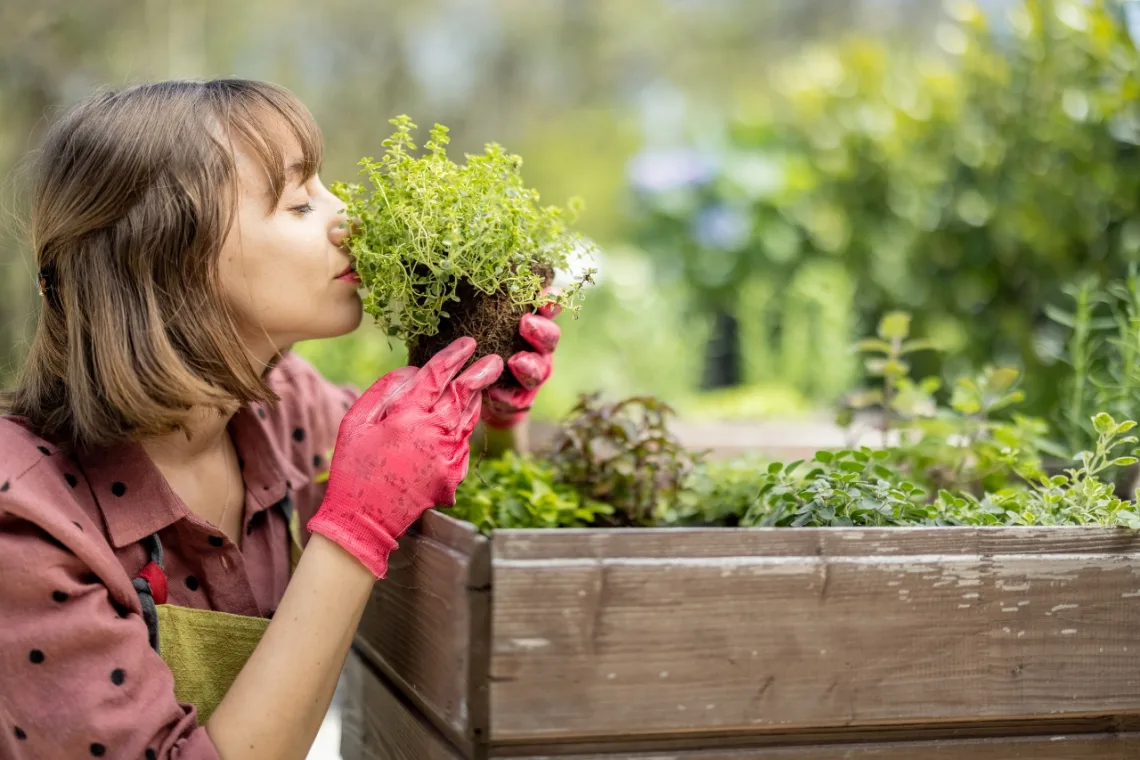
Picture this: you walk out into your yard in the morning. Dew is still on the grass. You reach out to a tomato plant and pick a ripe, warm tomato. This isn’t only for country magazine photos. It’s what happens when you grow your own organic veggies. Organic garden planting is not just a pastime. It’s a way toward a healthier you and a healthier planet. No bad stuff, no poisonous chemicals, only natural and pure.
Here ‘s something to consider: eating organically grown vegetables is a vote for health. When you refuse harmful chemical products, you help your health, the soil, and our Earth. It’s a way to say thanks to nature. Growing organically is working with Earth’s own timing. Every scoop of soil full of compost takes us closer to keeping our environment safe.
Beginning organic planting is Similar to starting an exciting trip. You never know the outcome, but there are many possibilities.
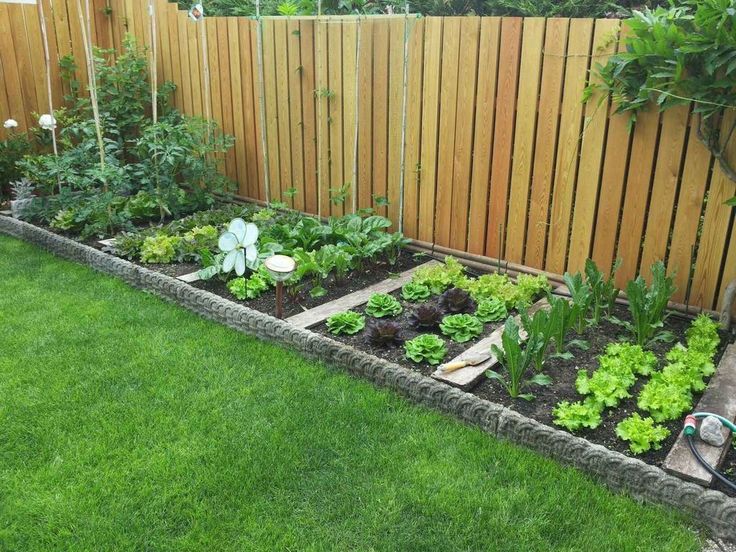
Finding the Best Spot
Your first task is to pick the perfect place. Plants, Similar to us, need a good spot to do well. A place that gets sunlight, is protected from harsh winds, and gets soft morning sunlight is best. It’s kind of Similar to house hunting for your vegetables – it’s all about the location!
Knowing About Soil and Preparing It
Soil isn’t just dirt. It’s what keeps your garden alive. There is fun in getting your hands soil-covered. Various plants need various kinds of soil: some want loose and sandy, while others Similar to it more clay-rich. Figuring out what your soil needs is Similar to solving a mystery, with you as the planting detective. Adding organic stuff, Similar to compost or old manure, feeds your soil just Similar-to vitamins feed your body.
Choosing Natural Vegetable Types
We’re going to focus on the main part next – veggies. Making the correct choices is key. Think of seed catalogs Similar to a food list, with many tempting choices. Some veggies are robust, enduring cold weather, while others love warm, sunny conditions. It boils down to what suits your local weather and taste. There’s nothing Similar to the thrill of eating a home-grown carrot – it’s a flavor explosion.
Any person wanting to learn more about eco-friendly organic gardening and looking to explore a variety of vegetables ought to stay informed with Farm Pioneer. The informative material is available on Organic Farming, providing useful tools for both new and seasoned gardeners aSimilar to.
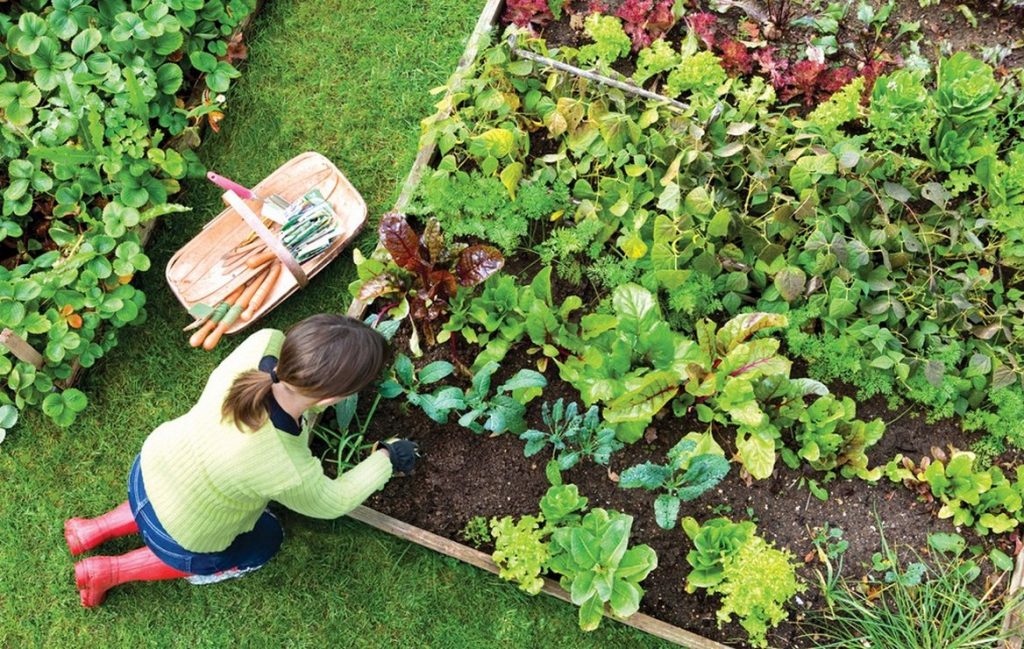
Organic planting Basics
Think of organic farming as taking care of an active artwork, where every detail is important, with the colors all originating from nature. This part dives into the crucial methods that make this craft both aesthetically pleasing and sustainable.
Natural Ways to Boost Soil Health
Try to think of your garden’s soil Similar to a busy city, with a world full of activity right below the top layer. To naturally enhance this vibrant underground city, we use organic materials. Composting is akin to soil recycling – it turns kitchen waste and grass clippings into nutrient-dense soil conditioner. A method called green manuring involves growing plants Similar to clover or alfalfa and then plowing them back into the soil to enrich it with elements. It’s Similar to a life cycle taking place in your own backyard.
Dealing with Pests Organically
You know pests – they’re a gardener’s nemesis. In the organic arena, our weapon is the circle of life. We bring in helpful critters Similar to ladybugs or lacewings, the pest-busters of your garden. Grow marigolds or garlic – they’re nature’s pest control, their potent aromas keeping pests at bay. It’s Similar to playing checkers, but with a green spin.
Water Usage in Organic Gardens
Water is the juice to make the garden grow, yet it shouldn’t go to waste. See your garden as a sponge; it thirsts for enough water to stay damp, but not so much it’s swimming. Drip lines and soaker hoses are our ace in the hole, getting water straight to the roots. Mulch is a game-changer, locking in dampness and cutting down watering days. It’s all about keeping things even-keeled and sustainable.

Organic Planting and Care methods
Creating and caring for an Organic Farming is Similar to being the conductor of an orchestra – everything comes together in beautiful harmony.
What to Plant When: Guide for Organic Veggies
Timing is crucial. A veggie planting schedule is your melodic score, showing you the right notes – or rather, plants – for each moment. Spring could bring the spread of greens and peas, while sun-filled summer invites tomatoes and peppers. When fall rolls around, it’s time for root veggies to shine. It’s a continual dance of planting and reaping, each season spinning its unique enchantment.
Ways to Look After Your Garden Daily
Taking care of your garden every day can be calming, giving you time with nature. Regular weed removal keeps pest plants away, and controlled trimming aids your plants in becoming stronger. Watching your plants each day is vital – it’s similar to learning about a friend, knowing their needs and feelings.
Grasping Plant Growth and the Importance of Soil
Your plants’ health is tied to the state of the soil; they mutually help each other. Regular soil testing provides knowledge about its requirements, whether it needs extra nutrients or pH balancing. Healthy soil makes healthy plants. It’s the base of a garden, and grasping it is Similar to comprehending your garden’s essence.
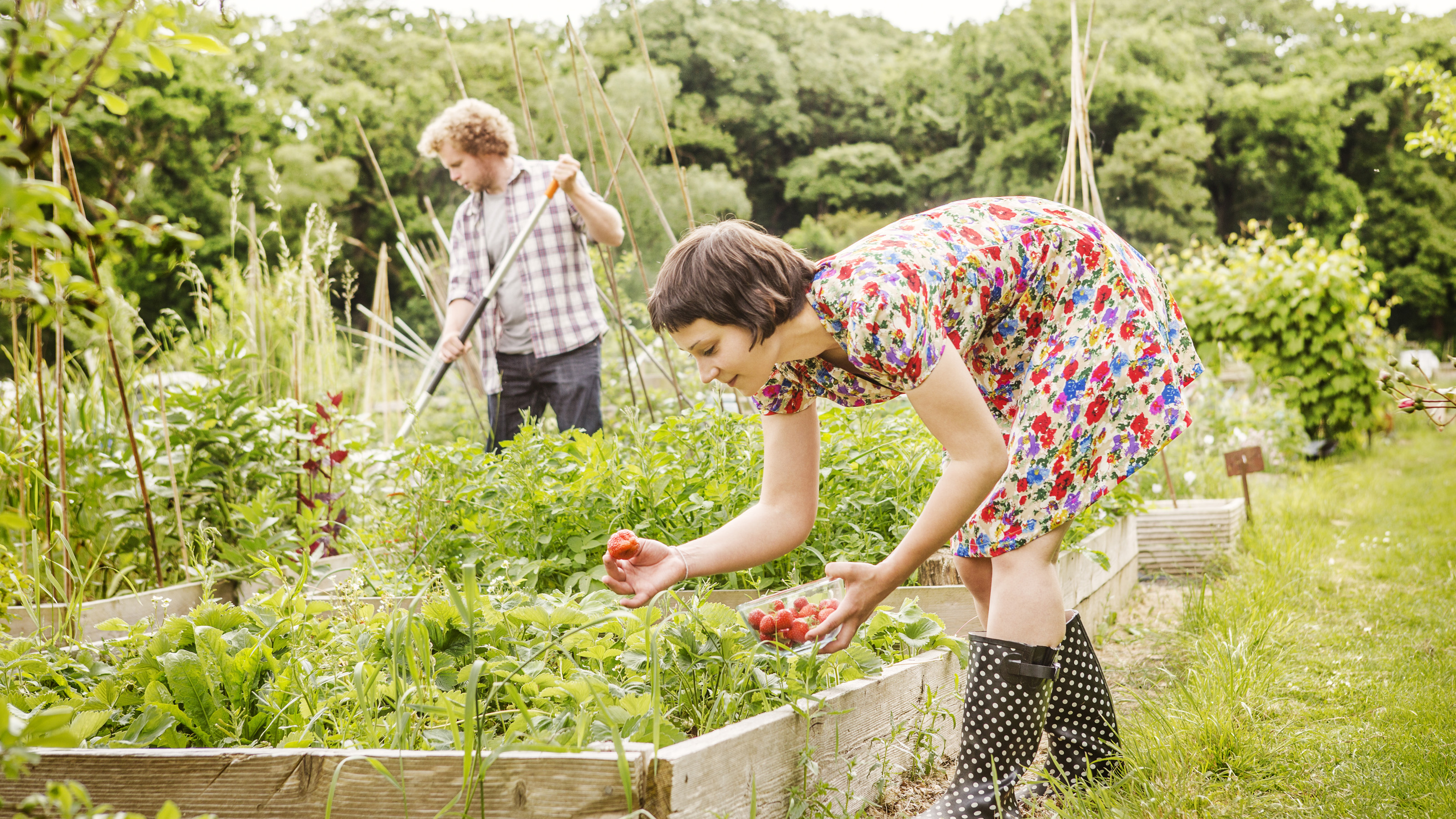
Collecting and Storing Your Crops
Collecting and saving your organic veggies is akin to reaping and protecting your hard work’s rewards. This phase is key for getting the most out of your planting efforts.
Excellent Ways to Gather Organic Vegetables
The harvest is more about tact than technicality. Timing is essential – you want to pick your vegetables when they are at their most ripe. Picture carefully twisting a ripe tomato from its stem or plucking a carrot from the ground, the rich aroma filling your senses. Use clean, sharp tools to avoid hurting the plants. And keep in mind, early morning is the prime time to gather your vegetables, as they are still fresh and firm.
Keeping and Saving Your Organic Harvest
After you’ve gathered your crop, it’s time to store it. Each veggie type has its own unique storage needs. Some Similar to the chill and darkness of a root cellar, others are fine right on your kitchen counter. Your fridge is a good short-term home for leafy stuff, and a pantry is perfect for potatoes and onions. And don’t forget about preserving things Similar to freezing, canning, and drying which let you savor the flavors of summer all year round.

Tackling Hurdles in Natural Horticulture
Natural planting, just Similar to any journey, has its hurdles. But remember, every problem is a chance to learn and improve.
Handling Typical Bugs and Illnesses
Think of pests and diseases as party crashers. The natural method is about prevention and equilibrium. Welcome helpful insects and use earth-friendly solutions Similar to neem oil or soft soaps. Regular checks on your plants help catch problems early, stopping them in their tracks. A healthy garden is your best shield against unwanted bugs and illnesses.
Coping with Wild Weather
We Rather can surprise us, but we can protect our gardens from its wrath. Mulching helps retain moisture in dry periods, and row covers fight off frost. In high heat, shade cloths can shield your plants from intense sunlight. These tools are Similar to a protective blanket, keeping your garden comfy and secure.
Eco-Friendly Tips for Tiny Places
You don’t need sprawling garden plots to go green. You can have a thriving organic garden even in compact spaces. For instance, container planting transforms your small patio into a thriving little green corner. Or try vertical planting, allowing walls and fences to bloom with greenery. The trick is picking suitable plants and pots, engineering tiny yet fruitful gardens.
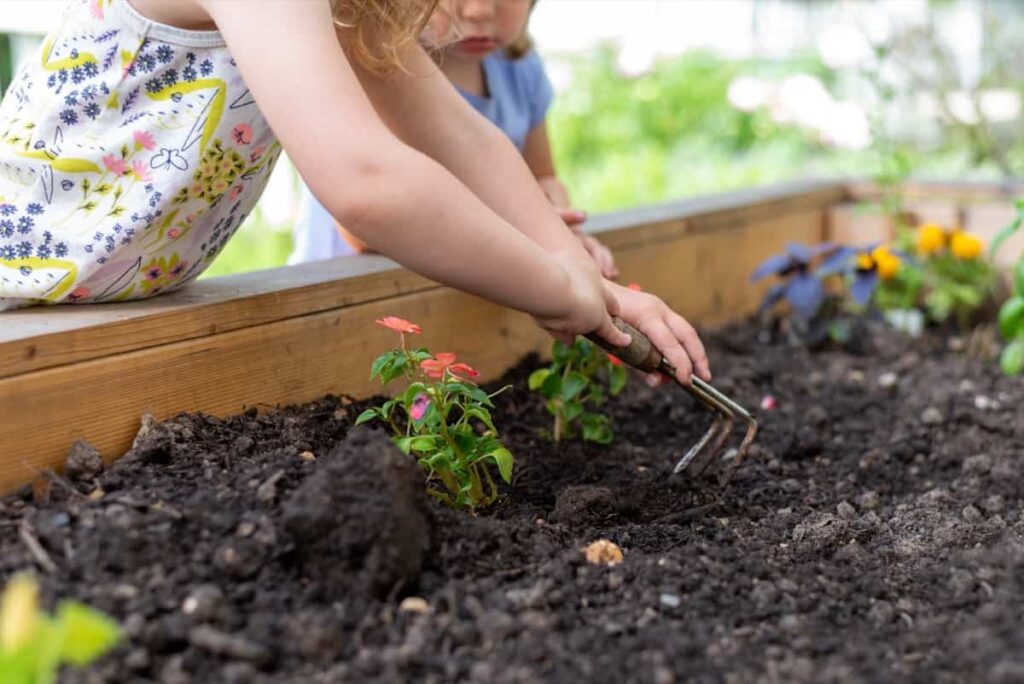
Leveling Up Your Organic Garden
Once the organic planting basics are mastered, it’s time to delve into advanced tips and methods for healthier and more productive gardens.
Companion Planting
Think of companion planting as finding best friends for your plants. Some plants thrive well together, mutually promoting growth and warding off pests. For instance, basil planted near tomatoes enhances their taste while fending off pests Similar to flies and mosquitoes. It’s about setting up a well-balanced ecosystem where each plant helps its companion.
Strategies for Changing Crop Locations
Changing your vegetables’ location annually, or crop rotation, is Similar to giving your garden an annual makeover. This practice prevents soil exhaustion and reduces the risks of pests and diseases. It’s Similar to a chess match for gardeners, where greens are strategically rotated after legumes, adding to the soil’s nitrogen content. This strategic placement results in healthier soil and stronger plants.
Employing Greenhouses and Vertical Gardens
For planting enthusiasts seeking to optimize space or length in the growing seasons, greenhouses, and vertical planting are brilliant solutions. A greenhouse is a shelter for plants safeguarding against harsh weather, while vertical planting optimizes vertical space – imagine beans climbing up a trellis or strawberries swinging in hanging baskets. These methods unlock planting potential even in tight spaces.
Final Thoughts
Going organic in your garden is Similar to going on a trip. You start with a seed and the basics, Similar to dirt, water, and bugs. Then you learn more about things Similar to planting friends next to each other and changing where you plant stuff. You want to get along with nature and have a garden that keeps going.
RephraseWhen you decide to do organic planting, it’s bigger than just having a home-grown salad. Every garden means a better tomorrow. It’s a big high five to work with Mother Earth, not against her. So, roll up your sleeves, try different things, and see your garden and your nature smarts bloom.

Learning
First-Time Buyer’s Guide to the UK Property Market

Entering the UK property market as a first-time buyer can feel both exciting and daunting. The process is filled with potential pitfalls and complex decisions, but with the right guidance, it can be navigated smoothly. The estate agents in Yorkshire demystify the journey from the initial decision to buy a home to the moment you step over the threshold of your new property.
Understanding Your Financial Position
The first and perhaps most crucial step in the home-buying process is understanding your financial situation. This includes assessing your savings, income, and current debts. Here’s how you can prepare:
1. Deposit: Generally, you’ll need at least 5% of the property price as a deposit, though aiming for 10% or more can provide better mortgage rates.
2. Income and Expenses: Use a budget planner to assess your monthly income against your expenses. This will help you understand how much you can afford in monthly mortgage repayments.
3. Credit Score: Lenders will evaluate your credit score to determine your mortgage eligibility. So it’s important to have a good credit score, and you should work on it if required.
4. Mortgage Options: Speak to a mortgage advisor to understand different types of mortgages, such as fixed-rate, variable-rate, and help-to-buy schemes.
Getting a Mortgage Agreement in Principle
A Mortgage Agreement in Principle (AIP) is a statement from a lender indicating how much they’ll likely lend you. You will be a more attractive buyer with an AIP as it shows sellers you’re serious and financially prepared.
Deciding What You Want
Before you start viewing properties, it’s essential to know what you’re looking for. Consider the following factors:
1. Location: Proximity to work, schools, public transport, and amenities are key. Research neighbourhoods to find the best fit for your lifestyle.
2. Property Type: Decide whether you want a flat, terraced house, semi-detached, or detached property. Each has its pros and cons.
3. Must-Haves: Make a list of non-negotiables, such as the number of bedrooms, garden size, and parking facilities.
4. Future Proofing: Consider your future needs. Are you planning to start a family? Do you need space for a home office?
Starting the Property Search
With a clear idea of what you’re looking for, you can begin your property search. Here are some tips:
1. Use Online Portals: Websites like Rightmove, Zoopla, and OnTheMarket are excellent starting points. Set up alerts to get notified of new listings that meet your criteria.
2. Visit Estate Agents: Register with local estate agents who can provide insights into the market and inform you of new properties before they’re listed online.
3. Attend Viewings: Don’t rush this part. Visit several properties to get a feel for what’s available in your price range.
Making an Offer
Once you find a property you love, it’s time to make an offer. Here’s how to approach it:
1. Research: Check the selling prices of similar properties in the area to gauge a fair offer.
2. Negotiate: Don’t be afraid to negotiate. The starting point is most usually the asking price.
3. Conditions: You might include conditions in your offer, such as the inclusion of certain fixtures or a specific moving date.
The Legal Process
If your offer is accepted, the legal process begins. You’ll need a solicitor or licensed conveyancer to handle the legalities. Here’s what to expect:
1. Conveyancing: This is the legal transfer of property ownership. Your solicitor will handle this, including conducting searches, dealing with the Land Registry, and transferring the funds.
2. Surveys and Inspections: Arrange for a property survey to check for structural issues. There are different types of surveys, from basic condition reports to full structural surveys.
3. Mortgage Finalisation: Once the survey is complete and satisfactory, your mortgage can be finalised.
4. Exchange of Contracts: This is when the sale becomes legally binding. You’ll pay your deposit at this stage.
5. Completion: On the agreed completion date, the remaining money is transferred, and you receive the keys to your new home.
Moving In
Moving day can be hectic, but planning can ease the stress:
1. Hire a Removal Company: Book a reliable removal company well in advance. Discover the best deals by getting quotes from multiple companies.
2. Pack Strategically: Label your boxes by room and keep essential items accessible.
3. Notify Utilities and Change Address: Inform your utility providers of your move date and update your address with banks, the DVLA, and other important institutions.
Settling In
Get settled. Introduce yourself to the neighbours, familiarise yourself with the local area, and really start to make the place your own.
Here are a few final tips:
1. Safety Checks: Make sure that your smoke alarms and carbon monoxide detectors are working, and make sure that you know where the gas and electricity meters are located.
2. Maintenance Plan: Keep a record of the smooth functioning of your new home with a maintenance schedule, complete with regular checks and seasonal tasks.
3. Personal Touches: Add personal touches to make the space feel like home. This can be from putting up family photos or redoing the decoration in your rooms.
Conclusion
Buying your very first home in the UK is most definitely a milestone, difficult and full of challenges but rewarding in the end. Such a philosophy guides you in understanding finances and knowing what you want to achieve from detailed research, and seeking professional advice that confidently helps you navigate the property market. Yes, the journey may have its hurdles, but in the end—owning your own home—the reward will be worth the effort. Welcome to your new chapter!
SEE ALSO: Conquer the Chaos: Hacks to Clean Your Home in Half the Time
Learning
5 Health Benefits of Regular Pedicures

There’s nothing quite like a pedicure to keep your feet looking and feeling their best, but did you know that pedicures do more than simply enhance the appearance of your feet? Many people don’t realize that regular pedicures can come with a wide range of health benefits that can promote the well-being of your feet, so here are some ways that your routine pedicure keeps both your toenails and feet in the best condition possible!
Smoother Skin
One of the biggest misconceptions about pedicures is that they only cater to and look after your toenails. While you’ll definitely be leaving each session with a fresh coat of nail polish, your pedicure can also do wonders for the health of your skin. Aside from trimming and shaping your nails and cuticles, you’ll notice that your nail technician also dedicates a few steps to the skin of your feet.
After inspecting your feet and looking for any issues or imperfections that may need to be addressed, your technician will work on an exfoliating scrub to remove any dead skin cells. This step may also be aided by a foot file, which can be used to buff away any calluses and other problem areas manually.
Softer Skin
After your nail technician addresses all the problem areas of your feet and removes any unwanted dead skin cells, he or she will often massage in a moisturizing product, such as lotion, cream, or butter, to ensure that your skin is properly moisturized. These products contain skin-loving ingredients that will ensure that your feet have everything they need to look and feel their best so that you can walk out of your pedicure with a renewed sense of confidence.
Healthier Nails
After your pedicure session, your nails will not only look better due to the fresh coat of nail polish, but they’ll also be healthier and stronger. This is because your nail technician takes their time to ensure that your nails are properly looked after through steps that include deep cleaning, nail trimming, nail filing, and cuticle care. All of these things work together to prevent issues like ingrown nails from occurring, all the while improving the appearance of your nails.
Increased Blood Circulation
While the specific steps included in your pedicure will depend on the beauty salon, most pedicures will have a massage step somewhere in the mix. One of the often overlooked benefits of these massages is the increased blood circulation, which can deliver more nutrients and oxygen to your feet and nails, promoting their health and appearance. Aside from that, better blood flow means reduced tension and soreness, as well as better distributed heat throughout your body.
Reduced Infections
A significant amount of dirt and bacteria can build up on your feet without you even realizing it, but pedicures can be a great way to prevent these from happening in the first place. The exfoliation step of a pedicure removes dead skin cells as well as all the debris that may have accumulated underneath, and the deep cleaning of your toenails and cuticles also gets rid of any impurities that may have slipped beneath them, which can stop infections from happening.
These are some of the many health benefits that you can look forward to at your next pedicure appointment. However, it’s worth noting that you need to book regular sessions to truly reap all the rewards. This can be difficult, especially when you don’t feel like driving to your nearest nail salon after a long day, but the good news is that you can enjoy the salon experience in the comfort of your own home with a home pedicure service.
Learning
Commercial Boiler Installation Services London

For businesses in the bustling city of London, having a reliable heating system is crucial. Whether you’re opening a new office, expanding your current premises, or simply upgrading an outdated system, commercial boiler installation services for businesses in London are essential to ensure your operations run smoothly and efficiently. Proper installation and maintenance of commercial boilers can make a significant difference in energy efficiency, cost savings, and the overall comfort of your workspace.
The Importance of Professional Installation
When it comes to installing a commercial boiler, professional expertise is paramount. Here’s why:
- Efficiency and Performance: Professional installation ensures that your boiler operates at peak efficiency, reducing energy consumption and lowering utility bills. A well-installed boiler can effectively meet the heating demands of your business without unnecessary energy waste.
- Safety: Commercial boilers are complex systems that require precise installation to operate safely. Professional installers adhere to stringent safety standards and regulations, minimizing the risk of accidents and ensuring the safety of your employees and premises.
- Compliance with Regulations: Commercial properties are subject to various building codes and regulations. Professional installers are well-versed in these requirements and ensure that your boiler system complies with all local laws and standards.
- Longevity and Reliability: Proper installation is critical to the longevity and reliability of your boiler. A professional installation can prevent common issues such as leaks, pressure problems, and system failures, ensuring that your boiler runs smoothly for years to come.
Key Considerations for Commercial Boiler Installation
When planning for a commercial boiler installation, several factors need to be considered:
- Type of Boiler: The type of boiler you choose will depend on your business’s specific needs. Options include gas boilers, oil boilers, and electric boilers, each with its own set of advantages. Consulting with a professional can help you determine the best choice for your business.
- Sizing and Capacity: The boiler’s size and capacity must match the heating demands of your commercial space. An undersized boiler will struggle to meet your needs, while an oversized one will lead to inefficiencies and higher costs.
- Location: The placement of your boiler affects its efficiency and accessibility for maintenance. Professional installers can help you choose the optimal location for your boiler.
- Integration with Existing Systems: If you’re upgrading or replacing an existing boiler, it’s essential to ensure compatibility with your current heating system. Professional installers can seamlessly integrate the new boiler with your existing setup.
Choosing the Right Installation Service

Selecting the right installation service provider is crucial to the success of your boiler installation project. Consider the following when making your choice:
- Experience and Expertise: Look for a provider with a proven track record in commercial boiler installations. Experienced installers can handle the complexities of commercial systems and provide high-quality workmanship.
- Reputation: Check reviews and testimonials from previous clients to gauge the provider’s reliability and customer satisfaction.
- Comprehensive Services: Choose a provider that offers a full range of services, including installation, maintenance, and repair. This ensures that all your boiler needs are met by a single, trusted source.
In London, ROWLEN is a reputable name known for delivering top-notch commercial boiler installation services. Their team of experts is dedicated to providing efficient, safe, and compliant installations tailored to the unique needs of businesses.
Conclusion
Investing in professional commercial boiler installation services for businesses in London is essential for ensuring efficiency, safety, and long-term reliability. By choosing an experienced and reputable service provider like ROWLEN, you can rest assured that your heating system will be installed correctly and maintained to the highest standards. Proper installation not only enhances the performance of your boiler but also contributes to the overall comfort and productivity of your business environment.
SEE ALSO:
-

 News4 years ago
News4 years agoLet’s Know About Ultra High Net Worth Individual
-
Entertainment2 years ago
Mabelle Prior: The Voice of Hope, Resilience, and Diversity Inspiring Generations
-
News11 years ago
Enviromental Groups Tell Mekong Leaders Lao Dam Evaluation Process Flawed
-

 Health4 years ago
Health4 years agoHow Much Ivermectin Should You Take?
-

 Tech3 years ago
Tech3 years agoTop Forex Brokers of 2023: Reviews and Analysis for Successful Trading
-

 Lifestyles3 years ago
Lifestyles3 years agoAries Soulmate Signs
-

 Entertainment3 years ago
Entertainment3 years agoWhat Should I Do If Disney Plus Keeps Logging Me Out of TV?
-

 Health3 years ago
Health3 years agoCan I Buy Ivermectin Without A Prescription in the USA?